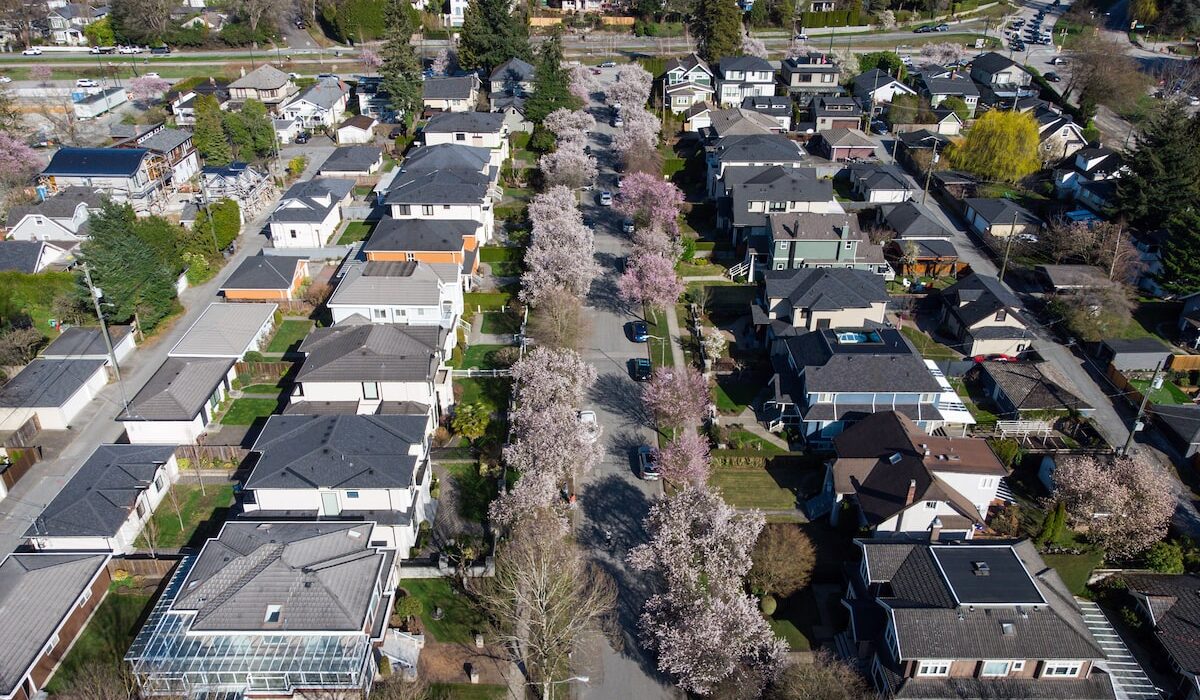
|
| Việt Nam’s real estate market attracts foreign investors in all segments. — VNA/VNS Photo |
HCM CITY — Việt Nam’s property market is attractive for foreign investors, according to experts.
The attraction is not just in terms of certain locations and segments but across the board.
Nguyễn Trọng Toàn, investment manager at property consultancy Savills’s Hanoi office, said every segment has its own charm for foreign investors.
In the residential segment, they are seeking investment opportunities and developing projects under their own brands amid scarce supply and high demand for housing, he said.
They leverage their advantages in branding, design and construction standards and quality, he said.
In the office segment, the market is seeing growing demand from energy, manufacturing and consulting businesses, which is keeping occupancy rates steady.
In major cities like Hà Nội, Đà Nẵng and HCM City, the segment offers increasing opportunities for foreign investors to position their products to meet green standards such as LEED, WELL and BREEAM certification.
In the Hà Nội property market, Toàn said foreign investors are not focusing just on central districts but are also looking elsewhere.
This is also a move to capture the shift by private offices and the development of urban transportation infrastructure, he said.
In the retail sector, the entry of retail giants underlines the prominence and attractiveness of the country.
In February Central Pattana, a retail powerhouse under Thailand’s leading retail conglomerate Central Group, prepared to establish a legal entity in Việt Nam to enter the vibrant market.
Earlier, after opening its third Emart hypermarket in HCM City, THISO (a subsidiary of THACO) unveiled plans to expand in the north with a fourth by acquiring a 2.4-hectare land plot in the Tây Hồ Tây Urban Area in Hà Nội City.
The hotel segment is also showing signs of recovery.
According to Savills Việt Nam’s Market Report, hotel occupancy rates and tariffs have increased in Hà Nội City and HCM City.
Last year, occupancy rates increased by 21 per cent in Hà Nội City annually and 18 per cent in HCM City.
Foreign investors are more open to various forms of investment to maximise the potential of the market, Toàn said.
After researching the market well, many foreign investors are also considering investment opportunities outside major cities. — VNS
There’s a widely held belief that real estate prices will, inevitably, only rise higher and higher. There are, however, long periods when that maxim is decidedly not the case.
Toronto is a prime example. After a surge in the 1980s, the Toronto market peaked in 1989 and didn’t regain that high until 2002 – more than a decade later. A 1995 peak in Vancouver was the high-water mark until eight years later. In the United States, it took a decade after the 2006 peak before that level was seen again.
Each example is different yet each shares central elements, from burst bubbles after manias to the gyration of interest rates and economic woes. What’s clear is real estate can go sideways for a long time, even if everyone believes the natural direction is up.
As Canada works to build a path to housing affordability, the most important thing is new supply – a lot of new homes. But just as important is changing the culture, the mindset that prices are destined to escalate.
Housing has long been expensive but the situation is now extreme. Five years ago, about 60 per cent of households could afford a condo. Last year, it was less than half. And that’s for a condo.
After many years of dizzying gains in the price to buy or rent a home, it’s become widely clear that higher and higher isn’t ideal and comes with many costs.
How to restore some semblance of affordability has shot to the centre of the political debate. This week, Canada Mortgage and Housing Corp., which has called for millions of new homes, held a conference on the question in Ottawa. The Globe on Wednesday illuminated how we got here in a series of charts, from record-low rental vacancies to the way-too-long time it takes to get new housing approved and built.
Many new homes are needed, yes. As this space showed last week, a burst of construction in booming Austin, Tex., has helped reduce the price to rent.
The shift in entrenched philosophy is also necessary. We need to rein in the housing market mindset that up is good, so pervasive in North America.
The mentality leads to speculation, starting with many families betting on the ever-rising value of their home as a pot of retirement savings. Generation Squeeze, an advocacy group for younger Canadians, puts it this way: “break the addiction to high home values.”
The celebration of higher home prices is deeply ingrained. Ownership in Canada peaked in 2011 at almost seven out of 10 households. Almost all political leaders own their homes and many are landlords. That’s the reason that as things started spinning out of control in the 2010s, blame was first cast on factors such as foreigners or investor speculation without grappling with the real problem: not enough housing.
In each example of real estate markets going sideways for a long time, Toronto, Vancouver, the U.S., it was always considered bad news. The Wall Street Journal lamented Austin’s shift from “America’s hottest housing market” to “running in reverse.”
The bigger goal is to rein in prices, bring them closer to people’s incomes.
The Teranet-National Bank house price index shows the price of housing rose 4.2 per cent annually from 2000 to this year, excluding inflation. Household incomes, according to Statistics Canada, rose by far less, about 1.2 per cent a year from 2000 through 2021.
The goal of a steady surge of new supply would be to establish a lasting buyer’s market. Critics of new supply will often say it won’t ease prices but big housing investors specifically warn shareholders that “competition for residents” and an “oversupply” of homes will affect the prices they charge.
Instead of hoping and cheering prices will someday soon recoup and exceed previous highs, the target has to shift to an extended, and welcome, period of nominal gains. If home prices this century had risen at only the rate of inflation, they would be less than half of what they are – and at levels last seen in 2006. Beyond a return to affordability, a market that offered such nominal returns is what would undercut and eventually end housing speculation.
Decades of culture and policy got us here. It will take time to restore affordability. It will take time to change the culture. But as Canada sets the initial foundations to allow for many more new homes, it is starting on the path to affordability.

|
| High-rise ready-built factory in the Long Hậu Industrial Park in Long An Province. The industrial real estate segment is expected to remain a “shining light” in Việt Nam. — Photo courtesy of longhau.com.vn |
HCM CITY — The industrial real estate segment is expected to remain a “shining light” in terms of investment volumes, development of quality ready-built facilities and strong price performance, according to property consultancy Knight Frank Vietnam.
Alex Crane, the company’s managing director, said supply in the ready-built leasing segment has tripled since 2016.
It was admittedly from a non-existent base, as he explained.
“Investors had to build their own facilities [before 2016]. The maturing of the development market now means ready-built inventory is set to increase 65 per cent in the next three years, which is a tremendous amount and this is encouraging for growth of existing occupiers and new-to-market entrants.
“With this amount of space, we will see rents at stable, affordable levels which will be very encouraging for occupiers.”
Speaking at a Canadian Chamber of Commerce event held recently in HCM City, Crane also highlighted the significance of Decree No 08/2023/ND-CP, which allows bond issuers to extend their maturities.
However, he cautioned that many issuances utilising Decree 08 will now fall due this year alongside those issued in 2021, which would result in many developers feeling similar pressure from the capital market as in the last two years.
While interest rates have stabilised, access to credit for developers remains relatively high, he said, adding that his company believes as a result there would be a natural slowdown in supply, which could soften price reductions through the remainder of the year.
He said the forecast for new apartment launches in 2024 has been reduced by over 50 per cent from the earlier one in 2023 as a result of developers reviewing their timelines and pushing many of these developments into 2025 and 2026.
He said apartment prices in HCM City and Hà Nội were converging, and attributed it to Hà Nội’s more rational market behaviour over the last few years, less speculation and more genuine demand.
While optimistic about Việt Nam’s overall property market in terms of net demand, he cautioned about the country’s growing comparative expense to regional peers. He cited examples of large manufacturers opting for other countries based on cost considerations, pointing to the need for Việt Nam to incentivise the best manufacturers to invest in the country, particularly given the global minimum tax is now applicable in Việt Nam, removing some tax incentives for large players.
Referring to regulatory changes, he welcomed delays in discussions about imposing additional taxes on a second property while the residential market finds a new market-led norm.
He also expressed optimism about the amendments to the Land Law, viewing it as a positive step for the market in the long term. — VNS
ST. PAUL, MN / ACCESSWIRE / February 27, 2024 / Antea Group is honored to announce that we have been ranked #19 in Environment Analyst’s latest report of the Top 100 Environmental & Sustainability Consultancy Firms.
The rankings, researched and curated by global sustainability membership and intelligence community Environment Analyst, identify the largest environmental and sustainability consultancies in the world, based on figures reflecting the 2022 financial year.
“It’s an honor to be recognized alongside other esteemed leaders in the environmental and sustainability consulting industry,” shares Raimond Baumans, Chief Marketing Officer at Antea Group USA. “Our place on this list is only made possible by the collaborative work we perform with our clients, helping them to take an active role in shaping the future – one in which people, planet and business all have the opportunity to thrive.”
Environment Analyst’s Top 100 report is constructed based upon global E&S consulting revenue for the latest financial year end analyzed, predominantly covering the 2022 calendar year.
The unique, comprehensive dataset was compiled through rigorous research of, and engagement with, the 100 leading firms, who represented $35.5bn in E&S consulting revenues in 2022.
Each of the Top 100 firms were ranked in order of E&S consulting revenue, and classified under one of four categories: Environmental & Sustainability specialist; Mid-range multidisciplinary; Large scale integrated/multidisciplinary professional services; or Management consultant.
Also included in the Top 100 list is Inogen Alliance with a ranking of #41. Inogen Alliance, co-founded by Antea Group in 2001 to better serve global clients, is a global network of partnering consultancies that provide multinational organizations with consistent, high-quality, and cost-effective environmental, health, safety and sustainability solutions.
Environment Analyst’s definition of environmental and sustainability consulting is: “The provision of specialist technical, management, risk and strategic advisory services to help organizations understand, manage and limit their impacts, to protect and enhance the environment and society in line with the UN Sustainable Development Goals“.
Download the Full Top 100 Report Here
About Antea Group
Antea®Group is an environment, health, safety, and sustainability consulting firm. By combining strategic thinking with technical expertise, we do more than effectively solve client challenges; we deliver sustainable results for a better future. We work in partnership with and advise many of the world’s most sustainable companies to address ESG-business challenges in a way that fits their pace and unique objectives. Our consultants equip organizations to better understand threats, capture opportunities and find their position of strength. Lastly, we maintain a global perspective on ESG issues through not only our work with multinational clients, but also through our sister organizations in Europe, Asia, and Latin America and as a founding member of the Inogen Alliance. Learn more at us.anteagroup.com.
About Inogen Alliance
Inogen Alliance is a global network of environment, health, safety and sustainability consulting companies working together to help multinational organizations meet their global commitments locally. With offices located on every continent, more than 5,000 associates worldwide, and projects completed in more than 150 countries, Inogen Alliance provides unparalleled local consulting expertise, global consistency and 20 years of experience building a cleaner, safer and more sustainable future. Global Thinking. Local Delivery. Learn more at www.inogenalliance.com.
About Environment Analyst
Environment Analyst is a leading provider of business intelligence, networking opportunities and advisory services to the global environmental, ESG and professional services sector. Environment Analyst has a global membership community of 40,000 sustainability professionals. Membership includes access to their entire market intelligence library, which features bespoke market intelligence reports, data-sets, interactive dashboards and competitor analysis profiles, plus business news and insights.
Environment Analyst also hosts networking opportunities for sustainability business leaders to come together in closed-group forums, and larger-scale in-person Sustainability Summits.
For more information about the report please contact Lead Report author Sarah-Jane James at sarah-jane@environment-analyst.com.
For more information about Environment Analyst and their membership services contact Membership Development Manager Lisa Turner at lisa.turner@environment-analyst.com or call (0) 1743 818 008.


View additional multimedia and more ESG storytelling from Antea Group on 3blmedia.com.
Contact Info:
Spokesperson: Antea Group
Website: https://www.3blmedia.com/profiles/antea-group
Email: info@3blmedia.com
SOURCE: Antea Group
View the original press release on accesswire.com
“Now, the market value has been driven to the ground because of the denial of permits,” Walker said.
But what the spit lacks in market value, it makes up for in resource value, he added.
A sign warning pet owners to keep their dogs out of a critical habitat is posted beside the dune system at Captain Sams Spit on Kiawah Island on Jan. 7, 2024.
Captain Sams Spit is one of the only three undeveloped barrier island beaches in the state with public access and is also a critical habitat to numerous species, including red knots, sea turtles and bottlenose dolphins.
Although Sams Spit’s resource value is considered priceless, financial benefits of the spit can be measured, to an extent, through sand, Walker said.
Sand, a precious resource that’s critical in addressing beach erosion, costs between $30 to $50 per cubic yard.
Kiawah Partners has granted permission to the Seabrook Island Property Owners Association for the Kiawah River inlet to be relocated three times since 1983. The inlet naturally migrates toward Seabrook Island as sand accumulates at the western end of the spit, Walker said.
The owners association paid for these relocations, engineered by Coastal Science & Engineering of Columbia, and permits were issued by the Army Corps of Engineers and DHEC.
These manipulations have moved the inlet back to its 1963 location by digging a new channel by the spit and filling in the inlet next to Seabrook Island. This has allowed for a “soft renourishment” of nearby Seabrook Island.
A “soft renourishment” doesn’t require dredging but rather encourages the natural accumulation of sediment at the intended site, he said.
Kiawah Partners estimated that this effort has led to the transfer of a cumulative 420,000 dump trucks worth of beach sand to Seabrook Island — at a total value estimated between $126 million and $210 million. This has increased Seabrook Island’s beachfront by more than 1,000 feet, Walker said.
“It has been done three times in 40 years, so as you look out at the future, each time that you would be relocating that inlet, you’re saving that amount of money from an actual beach renourishment project,” Randolph said.



